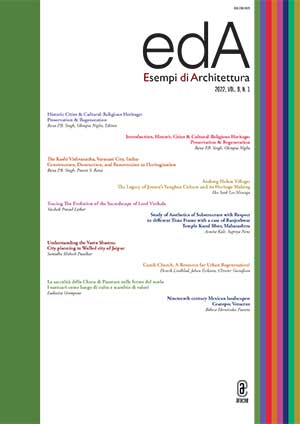DOI: 10.53136/97912599480769
Pagine: 103-116
Data di pubblicazione: Febbraio 2022
Editore: Aracne
SSD:
ICAR/18 ICAR/20 ICAR/21
Landscape, conceived as a social construction that takes place in a natural environment, which depends on its viewer’s perspective and is constantly evolving, contains the values with which this society identifies. Thus, it is a substantial part of its cultural heritage.Towards the end of the 19th century, Mexico experienced drastic and irreversible changes due to new industrial processes. Some regions stood out for specific productive activities. For example, the surroundings of Coatepec, Veracruz, became the center of coffee production due to its geographical characteristics. The changes that transformed this landscape include the insertion of communication systems and infrastructure, the modernization of mills, urban development, cultural, economic, and social activity, and, most notably, a new railway to speed up communication with the rest of the world.Particularly, the way that local people conceived the landscape changed as a result of this process. From the literature and graphic expressions of the time, we know that from 1870 onwards, artistic representations of the landscape included coffee plantations, reconverted mills, and the intense activities surrounding coffee production.The identification of the features of a landscape, such as the one in Coatepec, is the first step to plan its evolution per the development of its society and the strengthening of its cultural identity. This research aims to illustrate the methodology used in the study of the Coatepec landscape and lay the grounds to adapt it to other Mexican regions that experienced a similar change during the last decades of the 19th century.
Keywords: Landscape, 19th century, Industrial processes.




